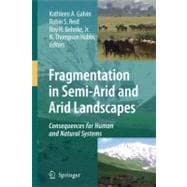
| Dedication | |
| Foreword | |
| List of Contributors | |
| Acknowledgements | |
| Introduction and Framework | |
| Global Significance of Extensive Grazing Lands and Pastoral Societies: An Introduction | p. 1 |
| Fragmentation of Arid and Semi-Arid Ecosystems: Implications for People and Animals | p. 25 |
| Causes and Consequences of Herbivore Movement in Landscape Ecosystems | p. 45 |
| Case Studies | |
| Australia | |
| Changing Patterns of Land Use and Tenure in the Dalrymple Shire, Australia | p. 93 |
| North America | |
| From Fragmentation to Reaggregation of Rangelands in the Northern Great Plains, USA | p. 113 |
| Land Use, Fragmentation, and Impacts on Wildlife in Jackson Valley, Wyoming, USA | p. 135 |
| Asia | |
| Ideology, Land Tenure and Livestock Mobility in Kazakhstan | p. 151 |
| Policy Changes in Mongolia: Implications for Land Use and Landscapes | p. 179 |
| Africa | |
| Fragmentation of a Peri-Urban Savanna, Athi-Kaputiei Plains, Kenya | p. 195 |
| Processes of Fragmentation in the Amboseli Ecosystem, Southern Kajiado District, Kenya | p. 225 |
| Ngorongoro Conservation Area, Tanzania: Fragmentation of a Unique Region of the Greater Serengeti Ecosystem | p. 255 |
| North-West Province, South Africa: Communal and Commercial Livestock Systems in Transition | p. 281 |
| Issues of Fragmentation and Complexity: A Synthetic Perspective | |
| The Drivers of Fragmentation in Arid and Semi-Arid Landscapes | p. 305 |
| Comparing Landscape and Infrastructural Heterogeneity within and between Ecosystems | p. 341 |
| Responses of Pastoralists to Land Fragmentation: Social Capital, Connectivity and Resilience | p. 369 |
| Index | p. 391 |
| Table of Contents provided by Blackwell. All Rights Reserved. |
The New copy of this book will include any supplemental materials advertised. Please check the title of the book to determine if it should include any access cards, study guides, lab manuals, CDs, etc.
The Used, Rental and eBook copies of this book are not guaranteed to include any supplemental materials. Typically, only the book itself is included. This is true even if the title states it includes any access cards, study guides, lab manuals, CDs, etc.